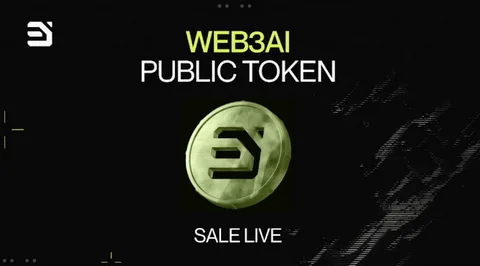Introduction
As October progresses, Ethereum ETFs are facing increasing challenges, weighed down by the broader bearish sentiment surrounding the crypto market. Historically, ETFs (Exchange-Traded Funds) have been a favored financial instrument to offer investors exposure to various assets, including cryptocurrencies like Ethereum. However, in a month like October, marked by a downturn in market sentiment, even these ETFs aren’t immune to significant price corrections.
While Ethereum ETFs may have been seen as a secure investment option during bullish phases, they are now struggling to maintain their appeal in the face of growing bearish pressure. Amid these turbulent times, decentralized finance (DeFi) projects like Cutoshi have started gaining attention, offering investors a more reliable hedge against market volatility.
As Cutoshi emerges as a promising alternative in the DeFi space, it becomes vital to explore how its decentralized structure and unique offerings position it as a hedge in a bearish market.
In this blog post, we’ll explore the ongoing struggles of Ethereum ETFs this October, delve into the reasons behind the bearish market sentiment, and analyze why Cutoshi emerges as a reliable hedge in the ever-evolving DeFi landscape.

1. Ethereum ETFs: A Struggle in a Bearish Market
Ethereum ETFs, introduced as a gateway for traditional investors to gain exposure to the blockchain, once sparked immense enthusiasm. These funds were designed to track the performance of Ethereum, providing indirect exposure to its price without requiring investors to hold the cryptocurrency itself. This offered a solution for those hesitant about dealing with wallets, keys, and the technicalities of blockchain.
However, the optimism that once surrounded Ethereum ETFs has dimmed, particularly in the wake of October’s market struggles. One key reason for this struggle is the broader bearish sentiment that has taken hold of the crypto market. Several factors contribute to this downturn:
- Global Economic Pressures: A tightening of monetary policies and inflation concerns have reduced investor confidence across financial markets, impacting risk assets like cryptocurrencies and ETFs that track them.
- Regulatory Uncertainty: As regulators continue to grapple with the classification of cryptocurrencies and their associated financial products, Ethereum ETFs are facing headwinds that stem from compliance challenges and legal ambiguities.
These factors have contributed to Ethereum’s price fluctuations, directly affecting the ETFs based on its value. During such a bearish phase, traditional financial products tied to volatile assets like Ethereum tend to face significant struggles.
2. The Bearish October: Understanding the Causes
October has been historically volatile for cryptocurrencies, and this year has been no exception. Several macroeconomic and crypto-specific factors have converged to create a bearish outlook for Ethereum and the broader market, including its ETFs.
- Market Sentiment: Cryptocurrency markets have a strong tendency to be driven by sentiment. As fears of a prolonged bear market take hold, investors tend to withdraw from speculative assets like Ethereum, further driving down prices.
- Macroeconomic Factors: Rising interest rates, geopolitical tensions, and economic uncertainty have weighed on all markets, including cryptocurrencies. With global liquidity shrinking, riskier assets like Ethereum have been particularly hard hit.
For many investors, this bearish October is not just another temporary dip but a sign of an extended downturn. This shift in sentiment and performance puts Ethereum ETFs in a particularly challenging position. With declining prices and lower trading volumes, these financial instruments are losing their appeal among investors who are wary of further losses.
In contrast to Ethereum ETFs, which struggle to perform under these market conditions, decentralized finance (DeFi) projects like Cutoshi are gaining traction as a potential solution.
3. Why Cutoshi Emerges as a Reliable Hedge in DeFi
In the face of such volatility, decentralized finance (DeFi) continues to innovate, offering new ways to navigate market downturns. Cutoshi, a rising star in the DeFi space, has garnered significant attention as a potential hedge for those seeking alternatives to traditional financial products like Ethereum ETFs.
What makes Cutoshi stand out?
- Decentralization: Unlike centralized financial products, Cutoshi is built on a decentralized framework, providing a hedge against regulatory overreach and central market pressures. This structure makes it more resilient to market sentiment swings that often impact ETFs.
- Liquidity Pools: Cutoshi’s DeFi model uses liquidity pools that allow for more stable earnings during periods of market uncertainty. Users can provide liquidity and earn rewards in a way that isn’t tied directly to Ethereum’s price performance.
- Smart Contracts: One of Cutoshi’s strengths lies in its innovative smart contract architecture. By automating processes and minimizing human intervention, the platform provides a higher degree of transparency and trust, which is vital in bearish market conditions.
Cutoshi’s approach to decentralization and DeFi makes it a potentially safer option for those looking to mitigate their exposure to Ethereum’s price swings and the ongoing ETF struggles.
4. Hedging Strategies with Cutoshi in the DeFi Space
In DeFi, a “hedge” generally refers to strategies or assets that protect against significant losses in a volatile market. With Ethereum ETFs faltering in October’s bearish market, Cutoshi has emerged as a hedge through several strategies:
- Yield Farming: One of the key features of Cutoshi is its yield farming capabilities, which allow investors to earn rewards by providing liquidity to decentralized exchanges (DEXs). Even as Ethereum prices fall, yield farming ensures that users can earn a return on their assets.
- Staking: Staking with Cutoshi also offers a more stable return compared to holding Ethereum ETFs. By locking up tokens in smart contracts, users can earn passive income without directly relying on market speculation.
- Diversification: Cutoshi offers diversified exposure to various DeFi products beyond just Ethereum. This reduces risk, as users aren’t overly reliant on the performance of a single asset class.
Through these hedging strategies, Cutoshi allows investors to navigate the bear market with a level of confidence that traditional Ethereum ETFs can’t currently provide.
Conclusion: Why Cutoshi Is the Future of DeFi Hedging
As Ethereum ETFs struggle amid the bearish market of October, DeFi projects like Cutoshi are emerging as reliable alternatives for savvy investors. With its decentralized structure, innovative smart contracts, and robust liquidity solutions, Cutoshi offers a hedge against the volatility that characterizes both Ethereum and its associated financial products like ETFs.
While ETFs have their place in a diversified portfolio, the unique benefits provided by decentralized finance—especially in projects like Cutoshi—present compelling alternatives for those looking to protect their investments during market downturns.
Are you seeking a way to hedge your exposure in this bearish market? Explore how Cutoshi can offer you stability and growth in the volatile world of DeFi. Share your thoughts and experiences in the comments below—how are you navigating the current market conditions?






